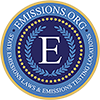Last updated on November 20th, 2017
Utah Car Insurance – The state of Utah operates under a no-fault car insurance system, which means that in an accident each driver is technically supposed to be held responsible for their own injuries and damages despite who was at-fault. Despite its no-fault status Utah still requires residents to maintain a few types of coverage that are generally seen in at-fault car insurance systems. Because residents still have the opportunity to sue the at-fault driver in Utah and vehicles are required by law to maintain at-fault coverage Utah is generally viewed as a hybrid state in which the principals of the two car insurance systems are combined in order to provide the best car insurance system for residents possible. As a no-fault state Utah requires residents to purchase a type of coverage, known as personal injury protection, which is not typically required in states that use an at-fault car insurance system. Unlike other forms of coverage, which are dependent on the placement of blame on a party before they can be activated, personal injury protection can be used no matter who is at fault and it will help pay for the injuries, and in some cases lost wages, which resulted from a car accident. In the state of Utah residents are required to purchase at least $3,000 of personal injury protection as part of their insurance policy in order to satisfy Utah’s minimum car insurance requirements. Although $3,000 in the minimum amount of personal injury protection coverage required by the state this amount is so small that Utah insurance professionals recommend that most drivers purchase coverage in excess of state minimum requirements.
The no-fault portion of the Utah car insurance system requires that drivers insure their vehicles with liability coverage in addition to the personal injury protection coverage required by the no-fault portion of Utah’s insurance system. Unlike personal injury protection, which is payable directly to the policy holder, liability coverage is only payable to secondary parties and can only be used when the policy holder is involved in an accident and it is determined that they were at-fault. Despite Utah’s no-fault origins the state still allows blame to be place on a driver so that other parties involved in an accident, and their insurance companies, can attempt to get financial relief from the at-fault driver. The minimum amounts of liability coverage required by Utah State law currently sit at $25,000 in bodily injury coverage for a single person, $65,000 in bodily injury coverage for a single accident and $15,000 in property damage liability coverage. Bodily injury coverage generally covers many of the same things as personal injury protection, including medical bills, lost wages and even funeral costs. Property damage liability coverage on the other hand will cover damage to the property of other drivers which typically comes in the form of damage to the other motorist’s vehicle. Liability coverage also differs from personal injury protection in that it cannot be activated until blame has been placed on the policy holder for an accident. Even if a Utah resident is involved in an accident and they have liability coverage the insurance company will refuse to pay for any injuries or damage sustained by other drivers until the police have determined which driver was at-fault. Although liability and personal injury protection are the only types of insurance required by the state of Utah many driver voluntarily elect to purchase optional coverage with their insurance policy In order to reduce the likelihood that they ill have to pay anything out of pocket for a car accident. Uninsured and underinsured motorist coverage can be purchased by drivers that are worried about being involved in a car accident with an uninsured or underinsured driver. In such a situation, even if the insured driver was not at fault they would likely end up having to cover the cost of their own injuries initially since the at-fault driver does not have the required coverage. Collision and comprehensive coverage is another type of optional coverage that is often purchased by Utah drivers. This coverage will cover the any damage to the insured vehicle, including damage that was a result of a car accident in which the policy holder was at-fault.
If at any time a Utah driver cannot provide proof that they have insurance on their vehicle they risk being penalized by both the DMV and law enforcement if they are caught. Driving uninsured is considered to be a Class B misdemeanor in the state of Utah and as such it uninsured drivers are punished with a $400 fine as well as the suspension of their driving privileges. Subsequent offenses will be punished with a fine of up to $1,000 and the mandatory suspension of the driver’s license and registration. Reinstatement of driving privileges often requires the driver to obtain an SR-22 form from their insurance company and pay any necessary reinstatement fees to the DMV.
